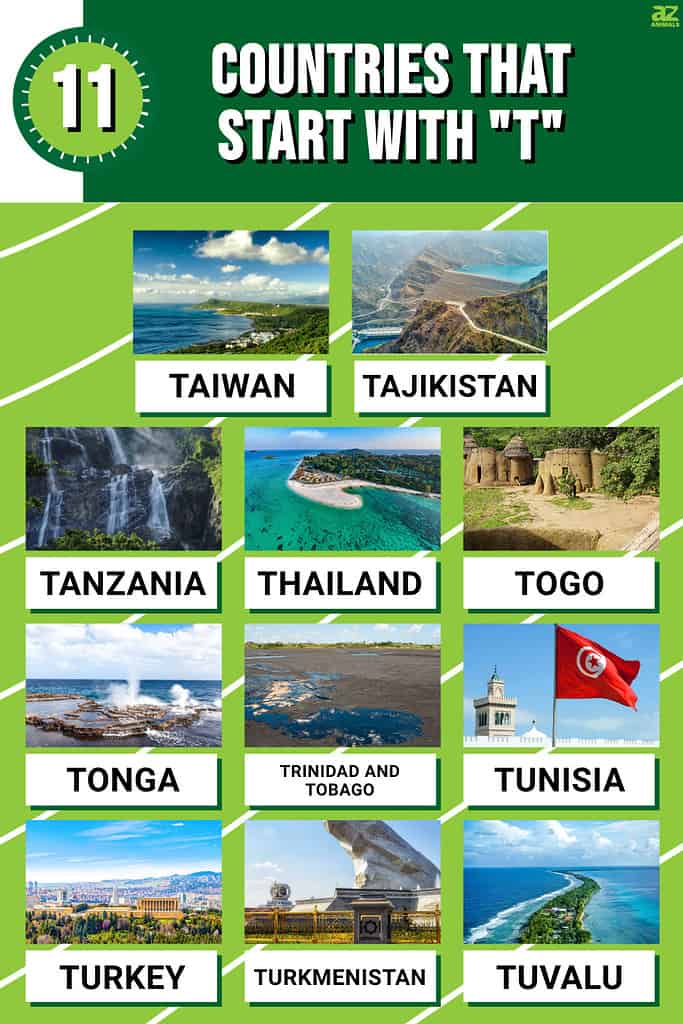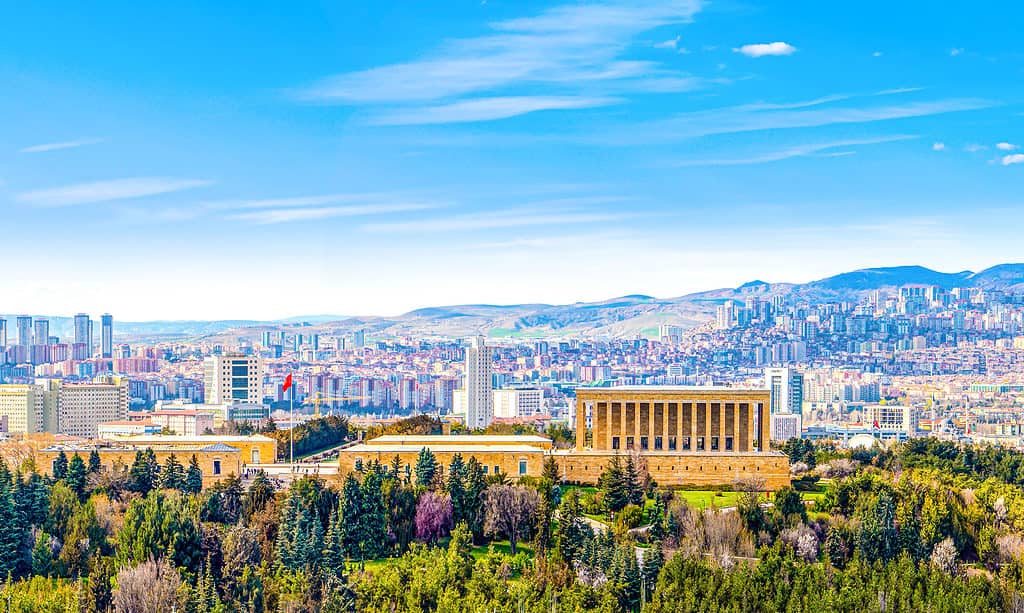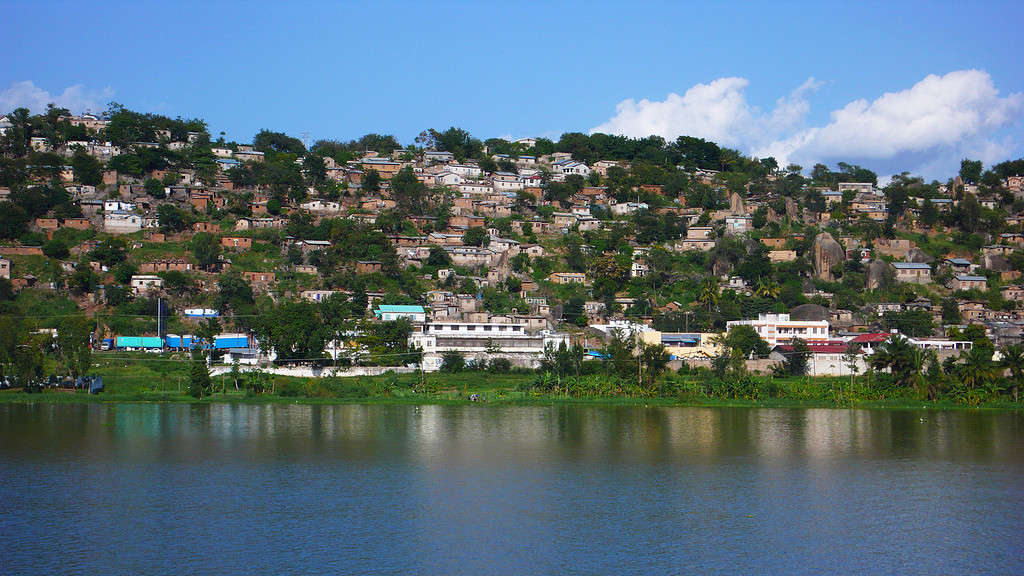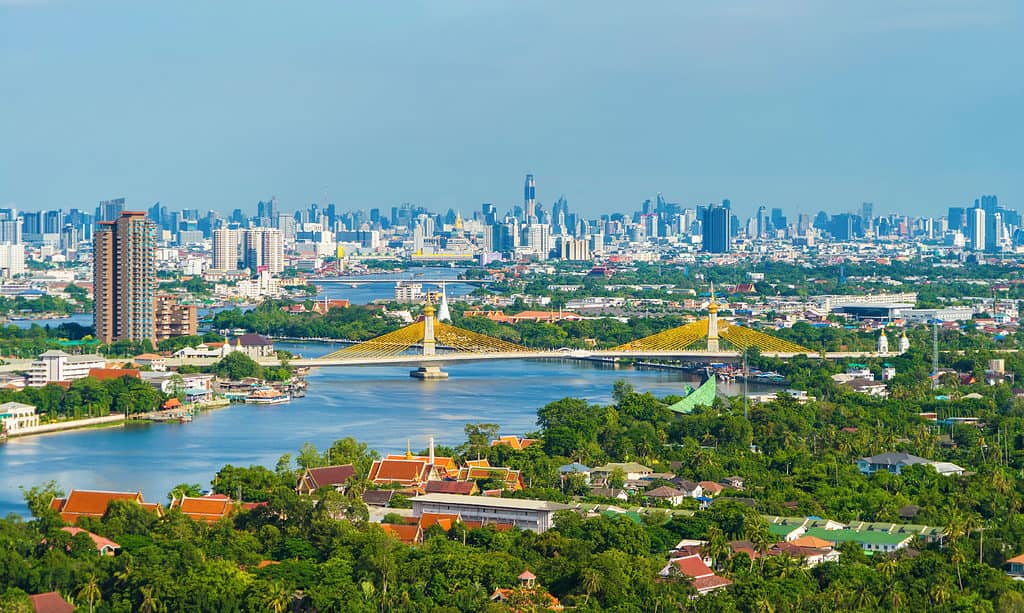Countries that begin with the letter “T” are Taiwan, Tajikistan, Tanzania, Thailand, Togo, Tonga, Trinidad and Tobago, Tunisia, Turkey, Turkmenistan, and Tuvalu. Read on to learn more about these incredible countries!
According to the U.N., there are approximately 195 countries in the world. This number includes 2 observer states, Vatican City and Palestine. The U.N. does not officially recognize Taiwan, which it instead lumps in with China. That said, how many countries begin with the letter “T.” For the purposes of this list, we’ll include Taiwan, as a large number of Taiwanese believe Taiwan to be a separate country from China. Keep reading to learn about the list of countries that start with “T!”

List of Countries That Start With “T”
If you include Taiwan, 11 countries start with the letter “T.” Let’s take a look at this list of countries that start with “T” and their approximate population.
| Country | Population | |
|---|---|---|
| 1 | Taiwan | 23.3 million |
| 2 | Tajikistan | 9.5 million |
| 3 | Tanzania | 61.7 million |
| 4 | Thailand | 69.6 million |
| 5 | Togo | 8.5 million |
| 6 | Tonga | 100,000 |
| 7 | Trinidad and Tobago | 1.4 million |
| 8 | Tunisia | 11.7 million |
| 9 | Turkey | 85.2 million |
| 10 | Turkmenistan | 5.6 million |
| 11 | Tuvalu | 11,900 |
The Most Populous Country That Starts with “T”

Turkey ranks as the most populous country that starts with the letter T.
©Bilal Kocabas/Shutterstock.com
With a population of approximately 85 million, Turkey ranks as the most populous country that starts with the letter “T.” Located primarily on the Anatolian Peninsula in western Asia, Turkey is bordered by the Black Sea to the north and the Mediterranean Sea to the south. Its neighbors include Georgia, Armenia, Azerbaijan, Iran, Iraq, and Syria. Its largest city, Istanbul, lies on the Bosphorus Strait, while its capital, Ankara, lies in the country’s center.
People have lived in Turkey for thousands of years. You can find one of the oldest neolithic sites in the world, Gobekli Tepe, in the southeastern part of the country. Over the centuries, control of the Anatolian Peninsula changed hands numerous times. The Greeks, Persians, and Romans all claimed parts of Turkey at one point in time. Ottoman control of the country began in the early 14th century and lasted up until the early 20th century. The Turkish War of Independence ushered into the modern Turkish state. On October 29, 1923, the Republic of Turkey was formed.
Today, ethnic Turks make up around 70 to 75% of the country’s population, followed by Kurds at 19%, and all other groups at 6 to 11%. While officially a secular state, the vast majority of people in Turkey follow the religion of Islam. Turkey boasts a robust and diversified economy that ranks as the 19th-largest in the world when ranked by nominal GDP. It ranks as one of the world’s leading producers of textiles, motor vehicles, construction materials, consumer electronics and appliances, and agricultural products.
The Largest Country That Starts With “T” by Area

Tanzania ranks as the largest country that starts with the letter T with 365,756 square miles of land area.
©Danita Delimont/Shutterstock.com
Tanzania, or the United Republic of Tanzania, is located in the African Great Lakes region of East Africa. At 365,756 square miles, it ranks as the largest country that starts with the letter “T.” Tanzania’s neighbors include Uganda, Kenya, Mozambique, Malawi, Zambia, Rwanda, Burundi, and the Democratic Republic of the Congo, while the Indian Ocean lies on its eastern coast. Its capital is Dodoma, and its largest city is Dar es Salaam. The tallest mountain in Africa, Mount Kilimanjaro, is located in the northeastern corner of the country.
Tanzania ranks among the oldest continuously inhabited places on Earth. Archaeologists have discovered hominid fossils in Tanzania that date back millions of years. Today, nearly 100 different ethnic groups live in Tanzania. Germany conquered Tanzania in 1885 only to cede control of the country to Great Britain following the conclusion of World War I. Tanzania remained under British control until December 9, 1961, when Tanzania declared independence as the state of Tanganyika. On April 26, 1964, Tanganyika merged with Zanzibar to form the United Republic of Tanganyika and Zanzibar (renamed the United Republic of Tanzania on October 29 that same year).
Today, Tanzania supports a population of approximately 61 million people. Most people in the country identify as Christian (63%), while around 34% identify as Muslim (34%). Its GDP of $76 billion per year ranks it 76th globally. Most of these earnings derive from agricultural production, which employs nearly half of all workers in the country. Tourism, energy production, and construction round out the other major sectors of its economy. Tanzania’s numerous national parks and incredible biodiversity make it one of the world’s hotspots for wildlife conservation. It is home to over 20% of Africa’s warm-blooded animal species, as well as 130 amphibian and 275 reptile species.
The Oldest Country That Starts With “T”

Thailand, formed in 1768, ranks as the oldest country that starts with T.
©Tavarius/Shutterstock.com
Formed in 1768 following the collapse of the Ayutthaya Kingdom, Thailand (formerly known as Siam) ranks as the oldest country that starts with “T.” Located on the Indochinese Peninsula in Southeast Asia, Thailand spans around 198,120 square miles. It supports a population of almost 70 million people, most of which identify as Thai (80%) or Thai Chinese (10%). Its neighbors include Myanmar, Laos, Cambodia, and Malaysia. The capital and largest city, Bangkok, also functions as the city’s economic and cultural hub.
The oldest known human settlements in Thailand date back approximately 20,000 years. Ethnic Tai people first arrived in Thailand around the 6th century BCE. Over the centuries, numerous states controlled all or parts of Thailand, including the Khmer Empire and the Kingdom of Pagan. Most Thai historians agree that the Sukhothai Kingdom (established in 1238) represents the first major Thai kingdom.
The Ayutthaya Kingdom replaced the Sukhothai Kingdom in 1351 and ruled until 1767 when it fell to the invading Burmese Konbaung dynasty. Taksin the Great reestablished Thai rule when he reunited Siam under the Thonburi Kingdom. His coronation on December 28, 1768, serves as the unofficial starting date of the modern nation of Thailand. That said, Taksin only ruled for 15 years until he was deposed by Phra Phutthayotfa Chulalok Maharaj or Rama I, the first ruler of the current Chakri dynasty in Thailand.
Today, Thailand is structured as a parliamentary constitutional monarchy. With a nominal GDP of $574.23 billion, Thailand ranks as the world’s 27th-largest economy. A founding member of the Association of Southeast Asian Nations, Thailand has blossomed into a powerhouse industrialized nation. Agriculture, manufacturing, and tourism rank among its top economic sectors. It also boasts an incredible biodiversity of flora and fauna, and over one-third of the country’s landmass enjoys some state protection.
The Youngest Country That Starts With “T”
Founded on October 27, 1991, Turkmenistan ranks as the youngest country that starts with the letter “T.” Located in Central Asia, Turkmenistan is bordered by several countries, including Kazakhstan, Uzbekistan, Afghanistan, and Iran, while the Caspian Sea lies to the west. Its largest city and capital is Ashgabat, which supports a population of around 1 million people. With a total population under 6 million, Turkmenistan ranks as one of the most sparsely populated countries on Earth.
For thousands of years, Turkmenistan served as a crossroads for the exchange of peoples, cultures, and goods. The historic Silk Road passed through Turkmenistan and allowed the country and its people to flourish. Riches flowed into several cities along the road, including Merv, which grew into one of the largest and richest cities in the world. The Russian Empire annexed Turkmenistan in 1881, while the U.S.S.R. gained control of the country in 1924. The Turkmen Soviet Socialist Republic lasted until 1991 when the country officially voted to separate from the Soviet Union.
The demographics of modern Turkmenistan consist of around 88% ethnic Turkmen, followed by Uzbeks (4.8%) and Russians (4.4%). Over 93% of people in the country follow the teachings of Islam, while around 6.4% identify as Christian. Turkmenistan’s nominal GDP of $74.4 billion means it ranks as the 78th largest economy in the world. The vast majority of this revenue derives from the energy sector, as Turkmenistan claims the 4th largest natural gas reserves in the world as well as substantial oil holdings.
Summary of 11 Countries That Start With “T”
| Country | |
|---|---|
| 1 | Taiwan |
| 2 | Tajikistan |
| 3 | Tanzania |
| 4 | Thailand |
| 5 | Togo |
| 6 | Tonga |
| 7 | Trinidad and Tobago |
| 8 | Tunisia |
| 9 | Turkey |
| 10 | Turkmenistan |
| 11 | Tuvalu |
The photo featured at the top of this post is © SN VFX/Shutterstock.com
Thank you for reading! Have some feedback for us? Contact the AZ Animals editorial team.






